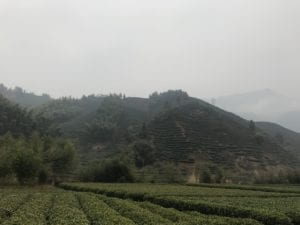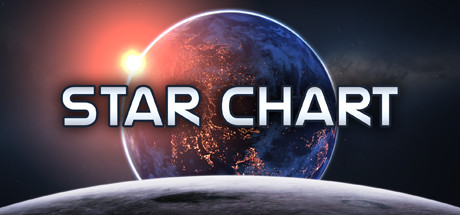Part 1: AR/VR Reflections
Facebook Presentation Summary
I ended up watching the summary and there were a few highlights that I found to be quite interesting!
Handtracking: I think that the new handtracking feature on the Quest is a breakthrough for the community. All of the AR/VR experiences that I’ve had the opportunity of trying have been greatly influenced or limited by the hand controllers and cords. The idea of removing controllers completely and giving the user free reign and ( generally more freedom) in the way they utilize the AR/VR space/environment is an amazing feat. It gives users a more intimate experience and is one step closer to the fully immersive journey that most people want when using AR/VR Devices. It can also change the way creatives approach design tools like “Quill” – and I’m looking forward to how handtracking will cause AR/VR applications to evolve.
-
Oculus Link
-
Gaming PC and USBC cable = run all the rift content on the quest
-
Your quest is a rift now too
-
Passthrough+ (can see things)
Social Networking on Oculus & Facebook Horizon: This to me was an expected new feature. It was only a matter of time before social media became integrated within the AR/VR space. There is already a debate about how social media can be a toxic environment for people, especially young adults, and it’s interesting to see how this will affect AR/VR world. I greatly value and appreciate the ability to connect with other communities from a distance but social media chatrooms, events, posts, and infrastructures via Facebook may not be the most healthy/conducive way of integrating AR/VR in social media.
-
Oculus TV
-
New hub for all media on the platform
-
Prime video, immersive experiences, 360 videos, etc.
Media Studio: The media studio tool is an exciting one for creators and entrepreneurs looking to expand within the AR/VR space. I like the concept of a repository/monitoring system for new applications to be developed within this environment. I love the idea of applications that help creators create. The immersion and performance analytics functions are all the more enticing for people to develop new experiences and the media studio is making it easier and more accessible.
Computer Vision/Machine Perception: This new development was perhaps the most intriguing and ready to launch. The concept of merging reality and virtual spaces and objects is something that I’ve always been curious about. This new feature was something that bridges the gap between real-life and AR/VR. It is also something that I see being implemented to various businesses, offices, and careers. Topics like social teleportation, facial reconstruction, along with a codec avatar were all conducive to mixing reality and real-life, connecting those who are at great distances. Again this feature is something that I find to have tremendous use in the future, highly accessible/digestible, and one that many people might be willing to adopt and implement in their daily lifestlyes.
Part 2:
Designing for Emotions
This to me stood out in particular for a plethora of varying reasons. It was stated in the video that some of the most highly rated and most powerful AR/VR experiences utilize/correspond with human emotion (ex: Notes on Blindness). The presentation expresses the idea that our emotions are perceived through various lenses and sensorial inputs within the body/the world that we are in, causing a trigger of strong emotional reactions within audiences. Emotions are a powerful method of designing AR/VR experiences by providing “sensory-rich worlds” that give us a very literal and direct way to feeling somethings. The presentations then continue to describe (4) methods in which designing for emotion can be a powerful tool (Memorability, Presence, Motivation, and Expanding Audience). One of the main things that stood out primarily is how emotions can dictate the user’s “journey” with Highs, Lows, and Climax’s giving it depth, vulnerability, and relatability. Emotions can be used as a method of organization for AR/VR developers to create better stories and applications that their audience can resonate with.
Supercharging Your Creativity with VR
The presentation had a tremendous focus on applications that allow creatives to be more creative – aka Quill. The basis of the presentation was documentation of how various industries within the art world are able to use VR to best supplement their own work. There was a point made in the presentation on how skills that were once foreign to some creatives were now possible via VR (2d sketch artists are now able to see their work/create art in a 3-Dimensional fashion). It makes creation easier. Artists in various concentrations utilize the program to elevate their work or become cross-industry artforms(film, storytelling, digital modeling, animation, illustrators, painters, etc.) VR enables a new type of workflow where contributions by usually time-sensitive jobs (post-production) can now be seen/done in a different order within the pipeline or expand upon it.
Part 3: Images of Shanghai
My thought process behind these photos was split in (2) ways: One of which was to take various images around Shanghai, photoshop them to remove any “human contact” and layer them to create a pristine “natural” environment. Another way was to find areas that were still pristine to some degree and make minimal changes.
Original:
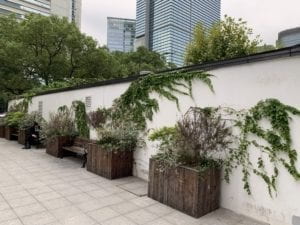

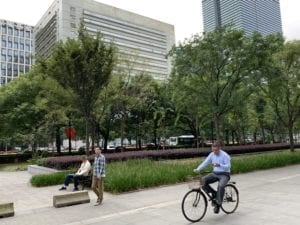
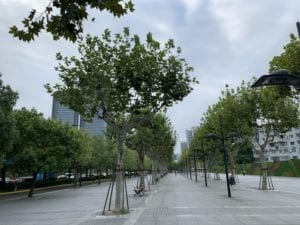

Edited:


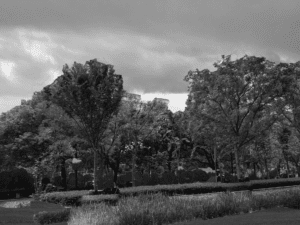
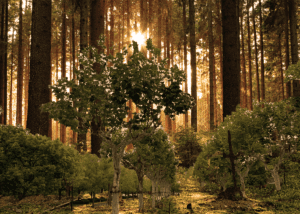
Pristine: (Taken between the border of Shanghai and Zhejiang Province)
